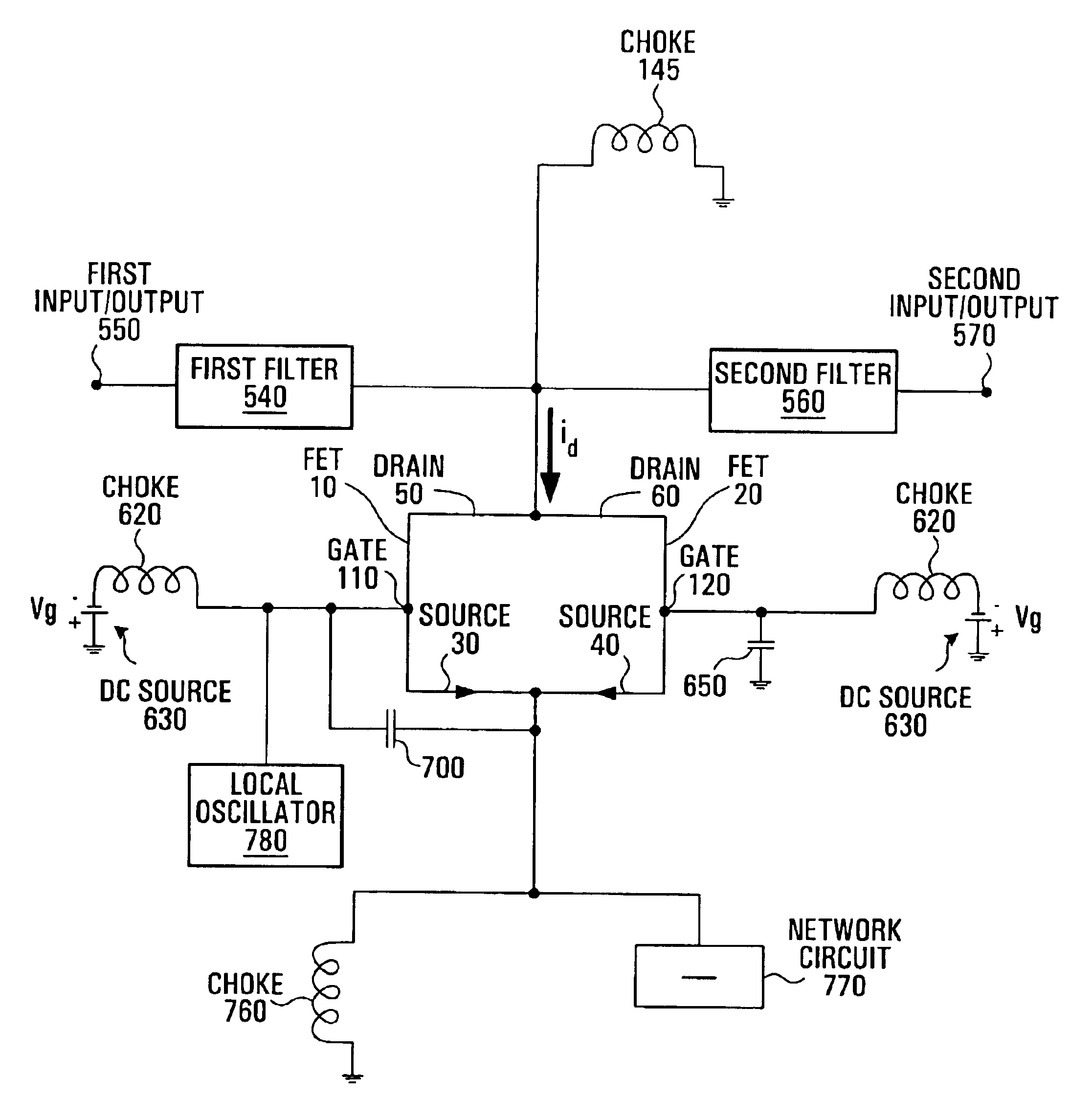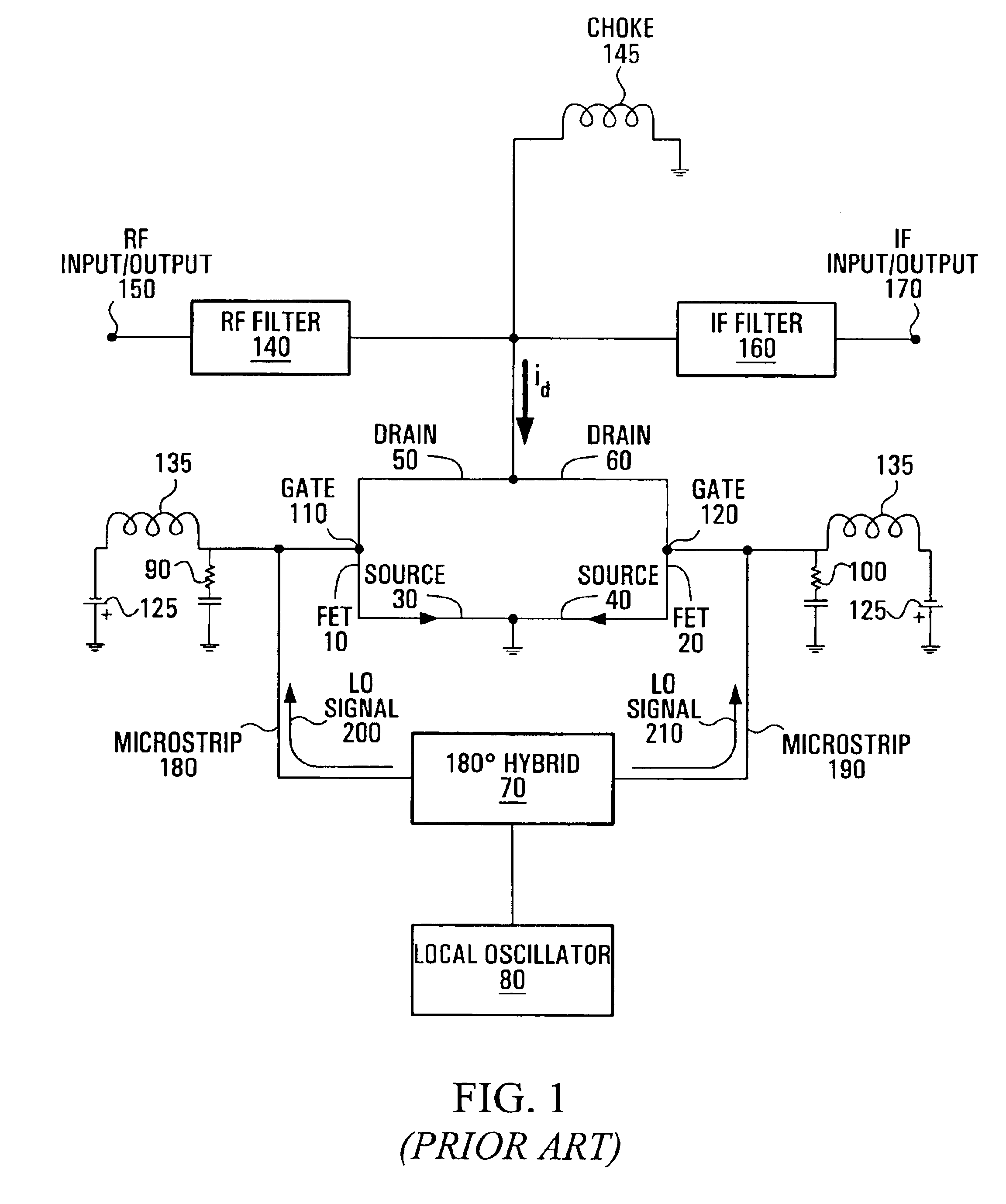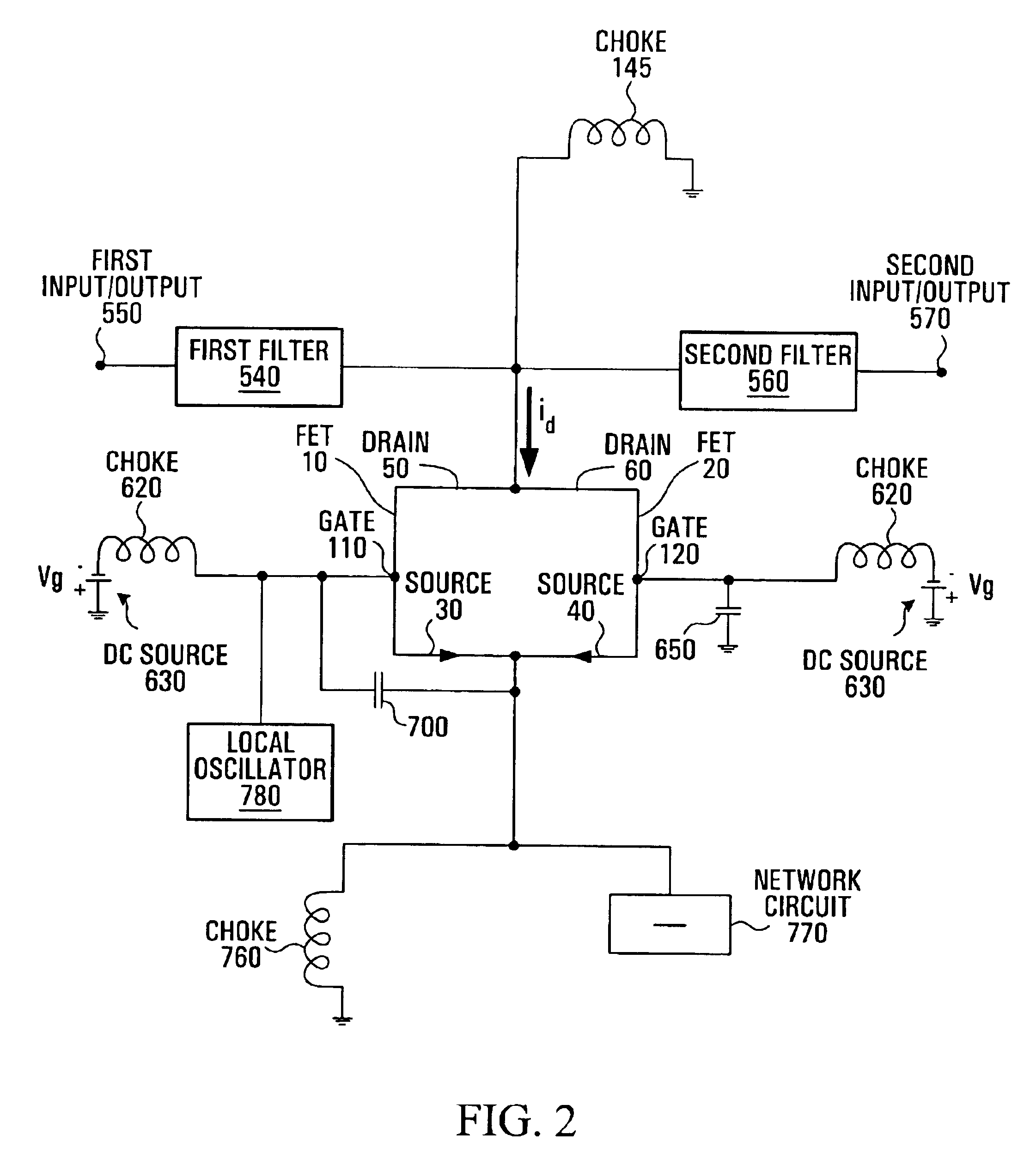Sub-harmonic mixer
a sub-harmonic mixer and mixer technology, applied in the field of mixers, can solve the problems of large volume, high cost, and inability to provide adequate output power at millimeter wave frequencies
- Summary
- Abstract
- Description
- Claims
- Application Information
AI Technical Summary
Benefits of technology
Problems solved by technology
Method used
Image
Examples
Embodiment Construction
Referring to FIG. 1, shown is a circuit diagram of a conventional gate-driven sub-harmonic mixer. A first FET (Field Effect Transistor) 10 and a second FET 20 each have a respective source 30, 40, a respective drain 50, 60 and a respective gate 110, 120. The drains 50, 60 are connected together, and the sources 30, 40 are connected together, and also to ground. A 180° hybrid 70 is connected to the gates 110, 120 of the FETs 10, 20, through a respective conducting microstrip 180, 190, and a local oscillator 80 is connected to the 180° hybrid 70. An ac grounded resistor 90, 100 is also connected to a respective gate 110, 120 of the FETs 10, 20. A choke 145 connects the drains 50, 60 of the FETs 10, 20 to DC ground. An RF filter 140 is connected between an RF input / output 150 and the drains 50, 60, and an IF (intermediate frequency) filter 160 is connected between an IF input / output 170 and the drains 50, 60.
A signal of frequency, f0, is generated by the local oscillator 80 and split b...
PUM
 Login to View More
Login to View More Abstract
Description
Claims
Application Information
 Login to View More
Login to View More - R&D
- Intellectual Property
- Life Sciences
- Materials
- Tech Scout
- Unparalleled Data Quality
- Higher Quality Content
- 60% Fewer Hallucinations
Browse by: Latest US Patents, China's latest patents, Technical Efficacy Thesaurus, Application Domain, Technology Topic, Popular Technical Reports.
© 2025 PatSnap. All rights reserved.Legal|Privacy policy|Modern Slavery Act Transparency Statement|Sitemap|About US| Contact US: help@patsnap.com



